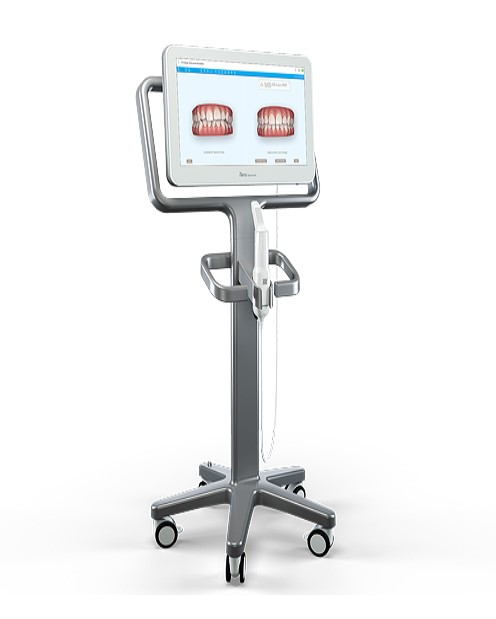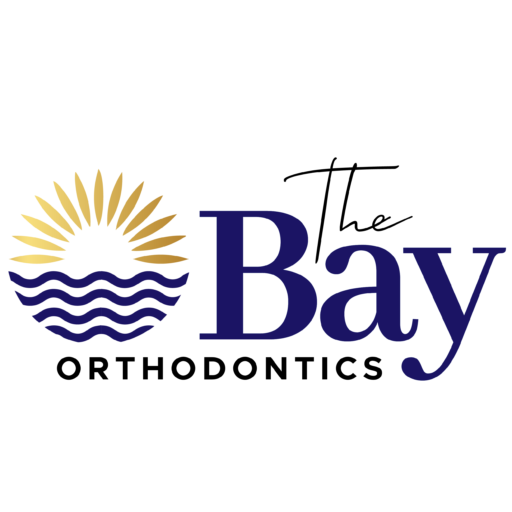Intraoral Scanners
Intraoral Scanners are used to capture pictures inside the mouth, in order to create a 3D model of the mouth and teeth. Before intraoral scanners, a mould of your teeth would be taken using a tray and impression material. With traditional methods, the tray is inserted into your mouth and, as you bite down into the impression material, it creates a mould of your teeth. This method is still commonly used, but intraoral scanners have digitised this process for near-invisible braces.
How do Intraoral Scanners work ?
Having an intraoral scan is simple and fast:
1. Your orthodontist will use the intraoral wand to capture images of your teeth and gums. The wand is minimally invasive and allows you to breathe comfortably during the process.
2. You can then watch the creation of your scan on the screen in front of you.
3. When complete, you will see a detailed 3D model on the screen. Your orthodontist will use this to tailor your braces to suit your individual needs.

What are the benefits of intraoral scanners?
There are many benefits of having an intraoral scan before treatment. These include:
Fast
You can view your 3D model on screen with your orthodontist, as it’s created in real time. Intraoral scans can also facilitate faster delivery times of treatment
3D Simulation
A detailed and precise 3D model of your teeth and gums is created. This can replace the more manual method of taking impressions
Accuracy
A detailed and precise 3D model of your teeth and gums is created. This can replace the more manual method of taking impressions
Comfortable
No messy impression material is needed. There’s no unpleasant taste or smell and you can breathe as normal
Lingual Braces
Lingual braces work the same way as other fixed braces but the brackets are attached to the inside of your teeth. For this reason, they are also known as hidden braces or braces behind teeth used in many industries these days.
Fixed Ceramic Braces
Ceramic braces, also known as clear braces, are a more discreet option than metal braces. Clear brackets are attached to the outer surface of each tooth and are linked by metal or tooth-coloured wires with more comfort.
What to expect
Our treatment coordinator will contact you to provide a free telephone consultation where we will discuss the services we provide, payment options and what your expectations are. Once we have confirmed you are dentally fit for orthodontic treatment, we will offer a face-to-face consultation with one of our specialist orthodontists.
A consultation to see a specialist Orthodontist is a £50 nonrefundable deposit to be paid when booking the consultation.
1. Consultations are to discuss options and suitability for treatment. You may require a more in-depth clinical examination or diagnostic tests before treatment options can be discussed.
2. Children under 18 can be referred for a free NHS assessment, subject to meeting the NHS qualifying criteria.
3. Consultations subject to availability. We recognise that when you give us personal information (which includes health information) you’re trusting us to take good care of it. Please see www.thebayorthodontics.co.uk/privacy for more information about how we collect, use and protect your data. If you don’t want to receive marketing about The Bay Orthodontics products and services that we think are relevant to you, please contact us at reception@thebayorthodontics.co.uk
